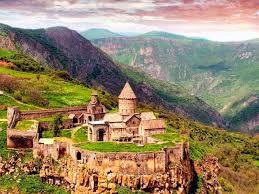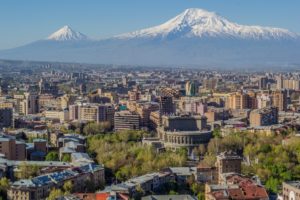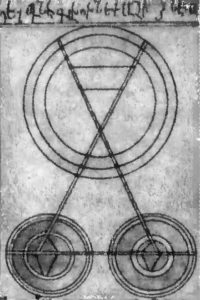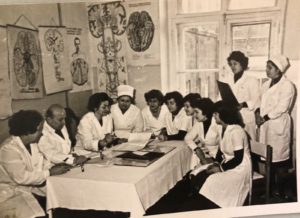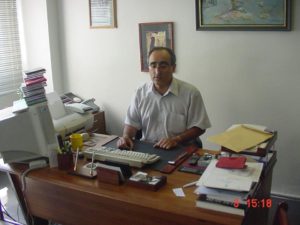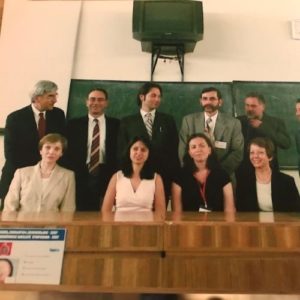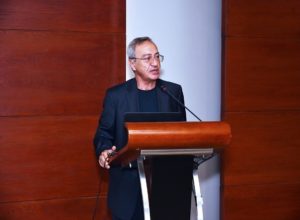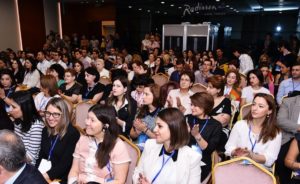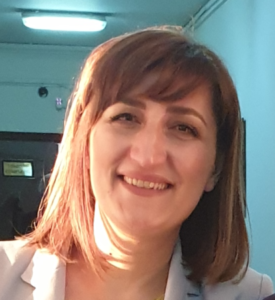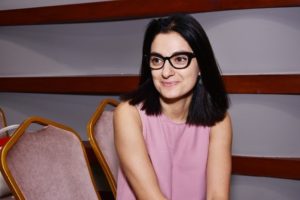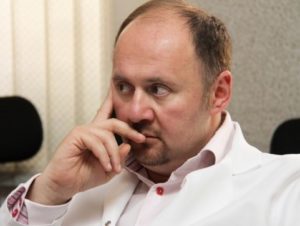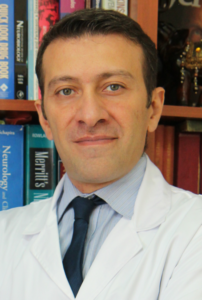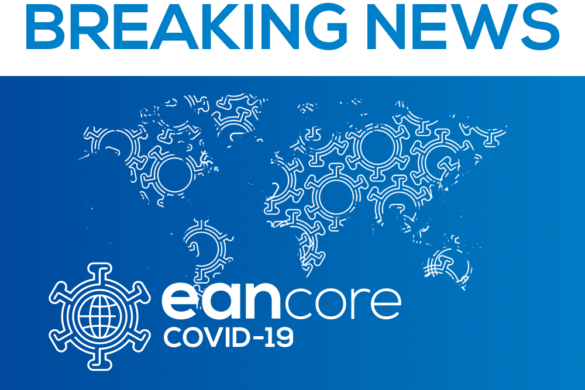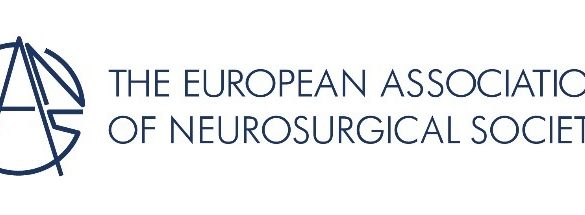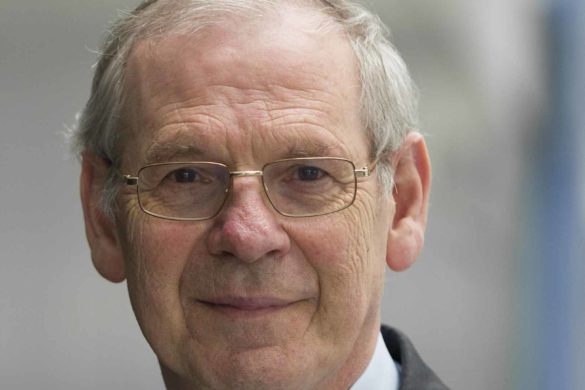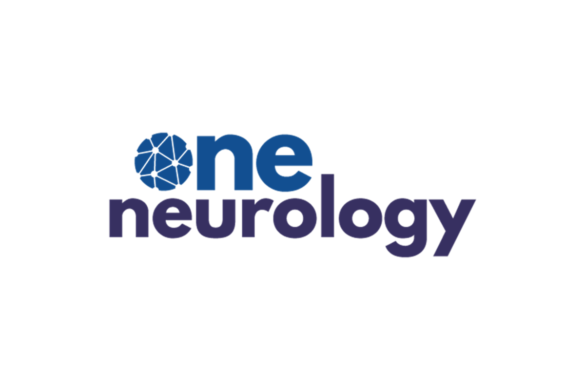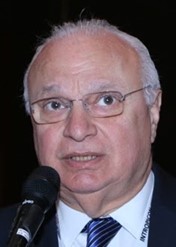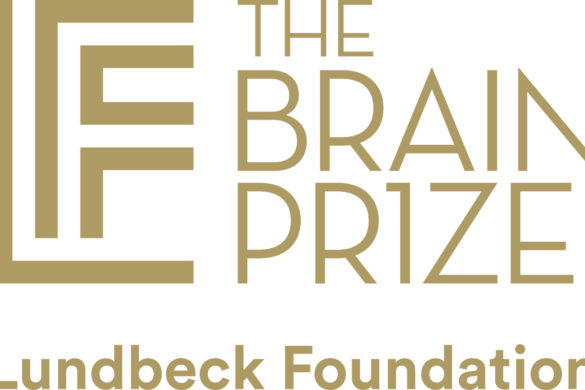About Armenia
Armenia is located in the South Caucasus, bordered by Georgia from the north, Iran from the South, Azerbaijan from the north-east and the south-west and Turkey from the west. The Republic of Armenia occupies a territory of 29,800 square kilometres. The capital is Yerevan. According to the general census of 2011 the population of Armenia is 3,018,854, 1.1 million of whom live in Yerevan.
Armenia declared its sovereignty from the Soviet Union on 21st September, 1991.
Tatev Monastery, 9th century
Yerevan, Capital of Armenia
Post-Soviet health care in Armenia
At the time of independence in 1991, no traces of pre-Soviet healthcare traditions were discernible. The Soviet healthcare system was highly centralized. The entire population was guaranteed free medical assistance, regardless of social status, and had access to a comprehensive range of secondary and tertiary care. After independence Armenia was not in a position to continue to fund it. Following a reform programme, all the hospitals and polyclinics, as well as rural health units from the previous system continue to function. Hospitals which were formerly accountable to the local administration and ultimately to the Ministry of Health are now autonomous and increasingly responsible for their own budgets and management.
A basic benefits package was established in 1999. This provides free specific health-care services, which cover medicines, to vulnerable segments of the population, including children, the elderly and disabled, impoverished people and injured military personnel. Since 2006, primary health care services have been free of charge.
In 2015, health expenditures as percentage of GDP reached 10.1% while 81.6% of all health spending was paid out-of-pocket. Currently, the share of total health expenditure coming from public sources is extremely low in Armenia (around 15%) – the last place in the WHO European Region. This number suggests the urgent need to allot more public resources for protecting citizens from financial risks associated with obtaining healthcare services.
There are 280 neurologists in Armenia, which is about 9 neurologists per 100,000 population, distributed unevenly, mostly in cities.
History of Medicine and Neurology in Armenia, past and current
Although no specialisations existed in medieval times in Armenia, we still have remaining accounts of renowned physicians of middle ages. This is due to the Armenian language and books preserved until today and kept in Matenadaran (Museum of Armenian Writings in Yerevan) and other libraries all over the world. Of this heritage some important works stand out, especially two famous Armenian physicians: Amirdovlat Amasiatsi (Amirdovlat from Amasia) and Mkhitar Heratsi (Mkhitar from Her). Amirdovlat Amasiatsi left essential heritage of the cutting-edge medical knowledge of that time. These were largely focused on human anatomy and physiology, diseases and their treatment.
Visual system scheme by Amirdovlat Amasiatsi
Yerevan State Medical University (YSMU) was founded in 1920 as a Medical faculty within the Yerevan State University and has obtained its independent status as Yerevan Medical Institute in 1930. It was renamed Yerevan State Medical University in 1990s. The University is listed in the Directory of Higher Medical Institutions adopted by the World Health Organization (WHO). The Neurology Department of YSMU was established in 1926.
Over the years, there have been prominent neurologists who were well-known in Soviet era, and led the development of neurology in Armenia. Academician Levon Badalyan played key role in developing pediatric neurology not only in Armenia but in USSR overall.
Prof. Elmira Gevorgyan was the chair of Neurology at the YSMU from 1976-1996 and was the President of the Armenian Neurologists Association since 1986, she was also the head of the Neurology Section in the Armenian Association of Neurologists and Psychiatrists since 1978. Her scientific interests were dedicated to brain tumors and the neurological aspects and symptoms of the familial Mediterranean fever.
Prof E.Gevorgyan with her students and colleagues
Prof. Vahagn Darbinyan was the chair of the Department of Neurology, YSMU from 1996-2006 and the President of the Armenian Neurologists Association for many years and played a key role in reforming the neurology service in Armenia. Neurology curricula for students, residents and neurologists were updated dramatically under his supervision to meet concurrent international developments. He was also a highly appreciated epilepsy specialist who introduced the modern epileptology to Armenia establishing a specialized Center for Epilepsy Care at Erebouni Medical Center. Under his supervision a whole school of Armenian epileptologists was shaped.
Prof. Vahagn Darbinyan
Prof. Gurgen Hovhannesyan is the current President of the Armenian Neurologists Association (ANA) starting from 2009. He heads one of the biggest neurology departments in Yerevan with an experienced neurointensive care unit. He is behind many important neurological meetings held in Armenia. During 2018 and 2019 two big conferences were organised under his chairmanship: BRAIN2018 and Stroke Symposium. The latter was a very successful satellite meeting to the International Medical Congress of Armenia (IMCA) – a large medical meeting involving prominent Armenian physicians and surgeons from all over the world. It is held once every other year in Armenia or abroad.
Those meetings were organised together with the huge Armenian neurological diaspora. A strong group of Armenian neurologists and neurosurgeons and neuroanesthesiologists from abroad, mostly from USA and Canada are helping in developing different fields of neurology and neurosurgery in Armenia for many years since the devastating Spitak earthquake in 1988.
Among them such prominent neurologists and related specialists like Dr. Babikian (Boston), Dr. Muratoglu (Edmonton), Dr. Minassian (Toronto), Dr. Attarian (Chicago), Dr. Avitsian (Cleveland), Dr. Sanossian (Los Angeles), Dr. Gaspar Israelian (Canada) , Dr. Grigoryan (Los Angeles), Dr. Artur Grigorian (Atlanta).
After the conference, group of Armenian diaspora neurologists from USA and Canada together with Dr Bella Grigoryan, Armenia delegate to EAN ( lower row, third from the left), 2007.
Prof Gurgen Hovhannisyan,ANA President
International Conference Brain 2018.
Nowadays, their efforts are mainly focused on developing modern stroke services in Armenia. With their huge support, there has been a big jump in establishing the first pilot national programme on ischaemic stroke care. In the frame of this programme, two major academic neurology hospitals started with thrombolysis and thrombectomy procedures which were covered in full by the government. In almost ten months the programme already proven to be a huge success for the country with hundreds of patients receiving modern advanced therapies and many lives saved and many more escaping or having reduced disability. A new generation of stroke neurologists and neurosurgeons was shaped in the process.
To emphasise the importance of stroke, a special task force named Stroke Council has been formed by the Ministry of Health, involving international experts and enthusiastic local neurologists. It is led by Dr. Nune Yeghiazaryan who is the head of the Neurology Department at Erebouni Medical Center, which serves as one of the two main tertiary stroke centres for the pilot national stroke programme, together with the 1st University Hospital of YSMU.
Dr. Nune Yeghiazaryan, Chairperson, Stroke Council, Ministry of Health
There are visible changes also in paediatric neurology. Dr. Biayna Sukhudyan is a renowned paediatric neurologist who heads the Department of Neurology at Arabkir children’s hospital. She is seeing the whole spectrum of paediatric neurological disorders, but her major focus remains epilepsy. She is a certified epilepsy trainer by European Epilepsy Academy (EUREPA) of International League Against Epilepsy. She established a child epileptology service at one of the biggest paediatric hospitals in Armenia and continuously works on its improvement. With her efforts and support from administration there is a successful collaboration between their department and a group of Bulgarian epilepsy specialist neurosurgeons who visit Armenia and perform epilepsy surgery. The latter is an important new development for Armenia, and not only children but also adults are being operated on at this center. She was able to involve many experts through collaboration with Zurich Children’s Hospital through frequent expert visits from Switzerland, especially by Prof. Eugen Boltshauser, with great results for Armenian children.
Dr Biayna Sukhudyan, Head of Neurology Department, Arabkir JMC
There are currently two three-year residency options in Armenia: one at the YSMU under the guidance of the neurology department chief Prof. Hovhannes M. Manvelyan and the recently reopened neurology residency programme at the National Institute of Health under the guidance of the neurology department chief Dr. Samson G. Khachatryan.
Prof. Manvelyan’s Department of Neurology is providing full spectrum of education from graduate to postgraduate neurology studies and CME. Both adult and paediatric neurology are covered. His research interests are wide and include dementia, MS, stroke, neuroinfections and many more. He is the vice-president of the Armenian Neurologists Association and Armenian Alzheimer Association, and the neurology expert of Yerevan City municipality health department.
Prof. H. Manvelyan, Chairman of Neurology, YSMU
Dr. S. Khachatryan’s newly established Department of Neurology and Neurosurgery at National Institute of Health is providing residency programs and CME in neurology, paediatric neurology and neurosurgery. He is focused on developing and expanding clinical research in neurology. The department is currently collaborating with international experts on various research projects, including stroke, epilepsy, sleep disorders, Parkinson’s disease and other movement disorders, neurogenetics, etc. Armenia’s first stroke neurology fellowship programme is being developed by the department in line with the above-mentioned national stroke program. Dr. Khachatryan’s area of research mainly focuses on epilepsy, sleep and movement disorders. He has been developing sleep medicine in Armenia since 2006 and is the founding President of the Armenian Sleep Disorders Association and head of a specialised sleep and movement disorders centre.
Dr. Samson Khachatryan, Chairman of Neurology and Neurosurgery, NIH
It is obvious that overall, Armenian neurology is making healthy progress towards higher standards of practice. With efforts from various key specialists in the field, their productive connections and collaborations, neurology is steadily moving forward in Armenia. The Armenian Neurological Society is eager to keep the pace and increase positive local developments. At the same time, it is becoming more important to represent the country on the international level with more scientific output and clinical collaboration.
By
Dr. Bella Grigoryan
Country Delegate to EAN, Neurology Service, 1st University Hospital, Yerevan State Medical University, Yerevan, Armenia
Dr. Samson Khachatryan
Chair of Neurology and Neurosurgery, National Institute of Health, Yerevan, Armenia.

